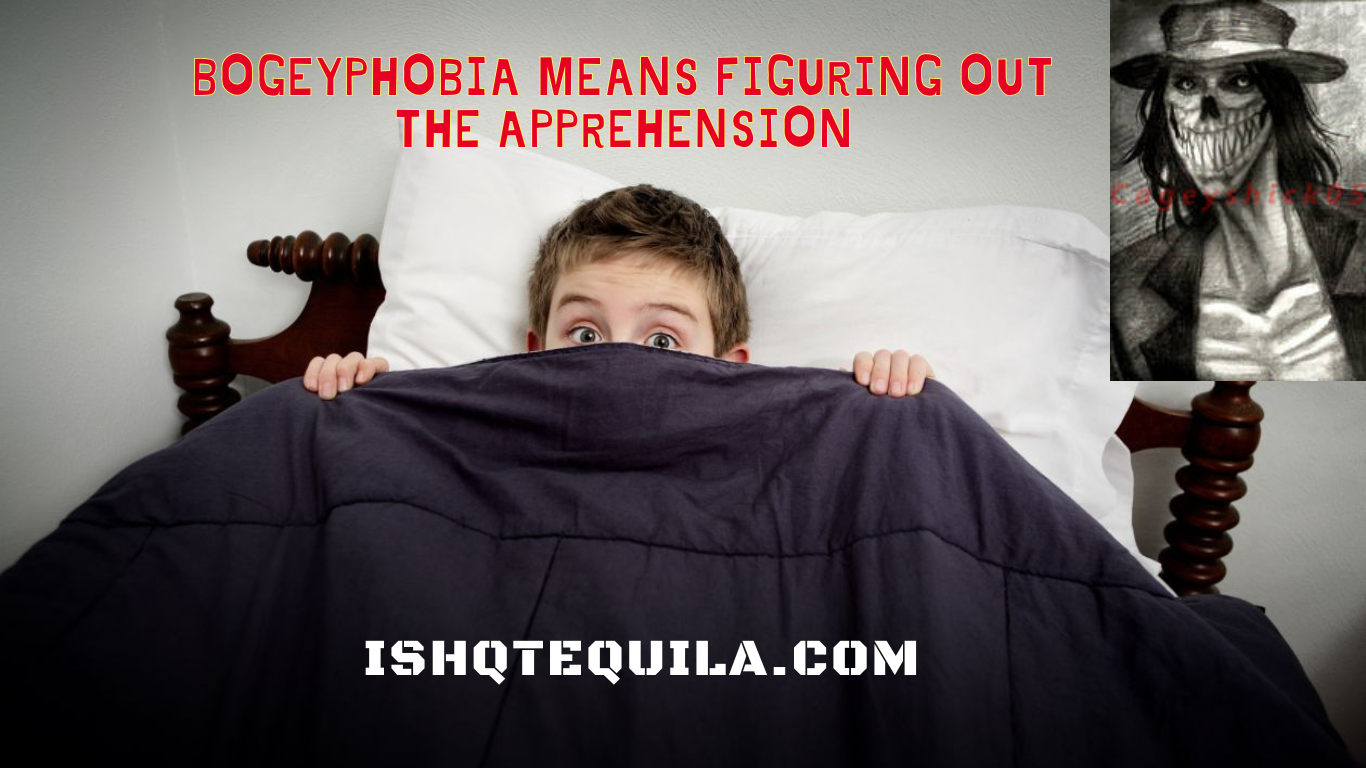Bogeyphobia means figuring out The Apprehension
Presentation:
Bogyphobia is a casual term for apprehension about the boogeyman. The boogeyman is a legendary animal used to startle youngsters into acting. It is often portrayed as a beast or other terrifying animal that prowls in obscurity or under the bed.


What is Bogyphobia?
Is a sort of unambiguous fear, which is an extraordinary and unreasonable feeling of dread toward a particular item or circumstance. Explicit fears are extremely normal, influencing around 12% of the populace. Individuals with a body may encounter a scope of side effects. Then they are presented. To the boogeyman, for example,
Uneasiness
Fits of anxiety
Perspiring
Shaking
Windedness
Discombobulation
Sickness
Feeling like they will pass on
In extreme cases, bogyphobia can slow down an individual’s everyday existence. For instance, they might abstain from hitting the sack or remaining in obscurity.
Side effects of Bogyphobia:
The side effects of bogyphobia can fluctuate from one individual to another. Certain individuals might encounter just gentle nervousness. When they contemplate the boogeyman. Others might have all-out fits of anxiety.
Reasons for Bogyphobia:
The specific reason for phobia is obscure, yet a blend of hereditary and ecological factors is thought to exist. Individuals who have encountered injury or manhandling might be bound to create bogyphobia.
Other potential reasons for bogyphobia include:
Genetics: Certain individuals might be more hereditarily inclined toward creating fears than others.
Cerebrum science: Fears might be connected to uneven characters in specific mind synthetics, like serotonin and norepinephrine. Learning fears can likewise be learned. For instance, in the event that a kid sees their folks or other believed grown-ups responding seriously to the boogeyman. They might be bound to create phobias themselves.
Treatment for Bogyphobia:
There is no one-size-fits-all treatment for the body. The best course of treatment will differ contingent upon the singular’s side effects and the seriousness of the fear.
Be that as it may, a few normal medicines include:
Mental social treatment (CBT): CBT can assist individuals with distinguishing and challenging the negative considerations and convictions that add to their apprehension.
Openness treatment: Openness treatment includes step-by-step presenting the individual with what they fear in a protected and controlled climate.
Medication: Medicine might be recommended to assist with diminishing the side effects of nervousness and fits of anxiety.
Adapting to Bogyphobia:
In the event that you have bogyphobia, there are various things you can do to adapt to your trepidation. A few supportive tips include.
Instruct yourself about the boogeyman. The more you are familiar with the boogeyman, the less unnerving it might appear.
Challenge your negative considerations. At the point when you have a negative view of the boogeyman, inquire as to whether there is any proof to help it. Unwinding methods. Unwinding strategies, for example.
Here are a few ways to adapt to bogyphobia:
Converse with a specialist or instructor about your trepidation.
Learn unwinding strategies, like profound breathing and contemplation.
Try not to watch terrifying motion pictures or programs.
Try not to go to dim places alone.
Lay down with a light on in your room.
Converse with your kids about the boogeyman in a consoling manner.
Conclusion:
The expression “body phobia” is certainly not an apparent one. It is conceivable that it is a somewhat interesting or restricted term, a neologism, or a language term that has emerged from this examination. Bogyphobia is a particular sort of dread, which is a kind of nervousness problem. It is an extraordinary and silly feeling of dread toward the intruder or the bogeyman. Fictitious animals intruders, often used to frighten youngsters into acting, are frequently portrayed as dim, shadowy figures with sharp teeth and hooks.
FAQs:
Q1: What is bogyphobia?
A1: Bogyphobia, sometimes spelled as a term used to depict a nonsensical and industrious apprehension about bogeymen. A bogeyman is a legendary animal or beast frequently utilized in fables and stories to terrify youngsters. Bogyphobia is basically. The anxiety toward these fanciful creatures.
Q2: What is a bogeyman?
A2: A bogeyman is an imaginary person, frequently depicted as an evil or noxious figure, used to startle kids into appropriate conduct. Various societies have their own varieties of bogeymen. The consistent idea suggests that parents or culture utilize them as a form of control, warning children of potential dangers.
Q3: What are the side effects of bogyphobia?
A3: Side effects of bogyphobia can fluctuate from one individual. To another yet may incorporate uneasiness. fits of anxiety, and shaking. And windedness. An extraordinary sensation of fear when the idea.
Q4: What causes bogyphobia?
A4: The feeling of dread toward bogeymen. This fear of the bogeyman instills itself in the child, enabling control over their behavior. Horrendous encounters or.
Q5: How is bogy treated?
A5: Treatment for Phobia regularly includes treatments like mental social treatment (CBT) to address and reexamine unreasonable feelings of trepidation. The person with the idea of bogeymen in a controlled and safe climate to lessen nervousness and dread.
Q6: Will bogyphobia influence grown-ups as well as kids?
A6: need and phobia can influence. The two kids and grown-ups. It frequently starts in youth because. Of the encounters or openness. The idea of bogeymen.
Q7: Is there a contrast between Phobia and different fears connected with nonexistent animals or beasts?
A7: Is explicit. the feeling of dread toward bogeymen. Various feelings of dread for instance. “monster phobia” or “creature phobia,” may allude to a feeling of dread toward different nonexistent animals or beasts.




